Failure of Electron Beam Physical Vapor Deposited Thermal Barrier Coatings System under Cyclic Thermo-Mechanical Loading with a Thermal Gradient
Abstract
:1. Introduction
2. Materials and Methods
2.1. TBCs Preparation
2.2. Thermo-Mechanical Coupling Testing with Temperature Gradient
2.3. Microstructure Characterization
3. Results
3.1. Microstructure and Composition of the TBCs after TMTG Cycles
3.2. Interfacial Morphology of the TBCs after TMTG Cycles
4. Discussion
Failure Analysis of the TBCs in Thermo-Mechanical Loading with Temperature Gradient
| α (×10−6/°C) | E (GPa) | ν | |
|---|---|---|---|
| TGO (α-Al2O3) | 5.08–9.20 [40] | 309–380 [40] | 0.27 [40] |
| NiCoCrAlYHf | 12.3–17.6 [40] | 72–152 [40] | 0.32–0.35 [40] |
| DD6 | 11.9–15.0 [36] | 78.1–131 [36] | 0.34–0.39 [36] |
5. Conclusions
- (1)
- The uniaxial tensile loading results in anisotropic rumpling. Compared with thermal cycles without mechanical loads, the TMTG specimens exhibit an enhanced TGO/bond coat interface on the tangential cross-section.
- (2)
- TGO exhibits a duplex microstructure, consisting of outer spinel and inner α-Al2O3. The mechanical load has little effect on the configuration of TGO, and the temperature only affects the TGO’s thickness, not its structure.
- (3)
- The mechanical strain has effectively accelerated the spallation of TBCs; it is inferred that the superposition of mechanical strain enhances the local tensile stress at the peak region of the topcoat/TGO interface. Quantification of the thermo-mechanical loading-induced rumpling effect needs further computational investigations.
Author Contributions
Funding
Institutional Review Board Statement
Informed Consent Statement
Data Availability Statement
Conflicts of Interest
Appendix A

Appendix B
Appendix C
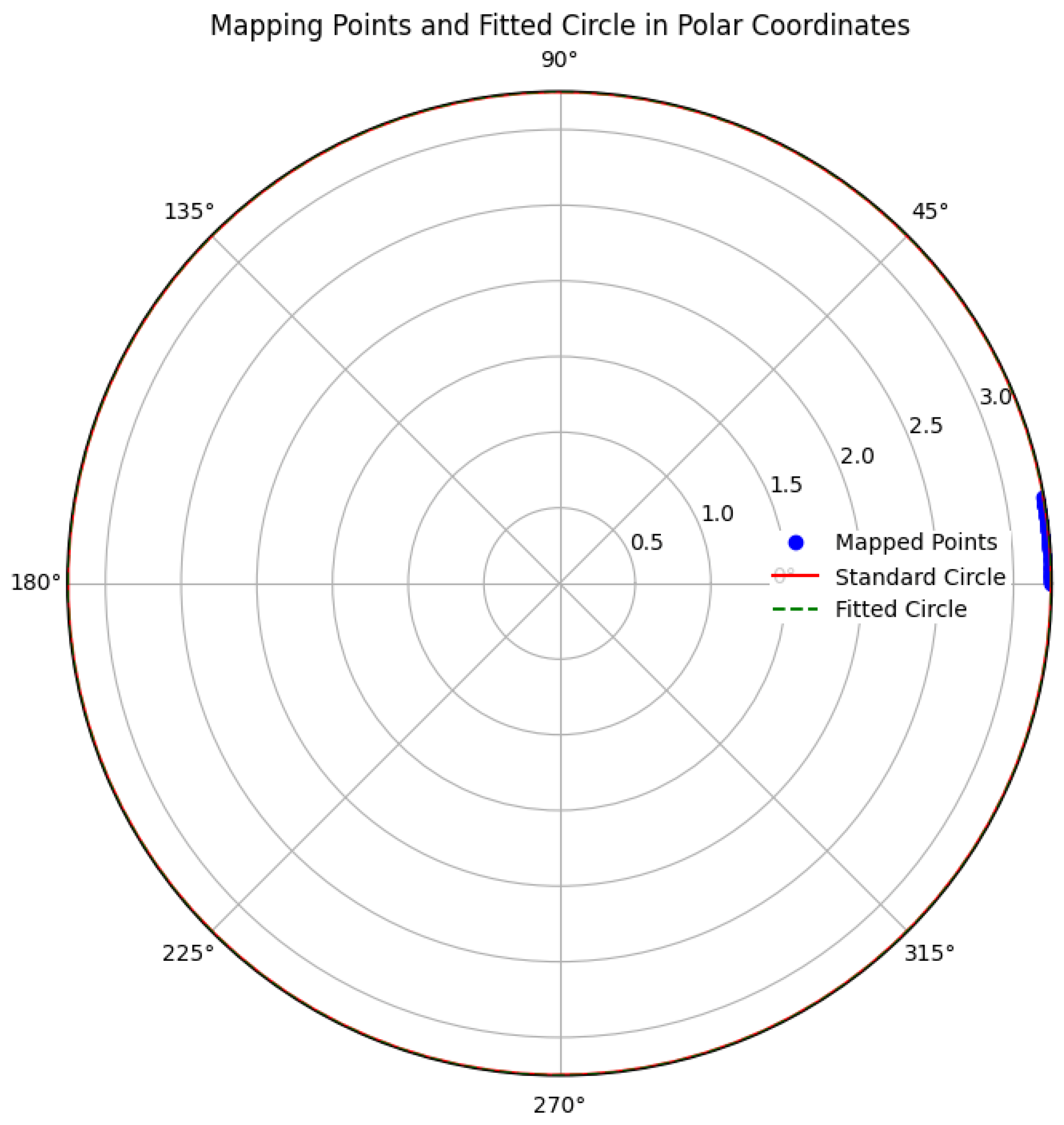
References
- Cao, X. Application of Rare Earths in Thermal Barrier Coating Materials. J. Mater. Sci. Technol. 2007, 23, 15–35. [Google Scholar]
- Beele, W.; Marijnissen, G.; van Lieshout, A. The evolution of thermal barrier coatings—status and upcoming solutions for today’s key issues. Surf. Coat. Technol. 1999, 120–121, 61–67. [Google Scholar] [CrossRef]
- Zhen, Z.; Wang, X.; Shen, Z.; Mu, R.; He, L.; Xu, Z. Thermal cycling behavior of EB-PVD rare earth oxides co-doping ZrO2-based thermal barrier coatings. Ceram. Int. 2021, 47, 23101–23109. [Google Scholar] [CrossRef]
- Bedoya-Trujillo, I.F.; Pérez, S.; Guijosa-García, C.Y.; Rivera-Gil, M.A.; Naraparaju, R.; Zárate-Medina, J.; Muñoz-Saldaña, J. Evaluation of the reactivity of dense lanthanum-gadolinium zirconate ceramics with Colima volcanic ashes. Surf. Coat. Technol. 2023, 470, 129825. [Google Scholar] [CrossRef]
- Sivakumar, R.; Mordike, B.L. High temperature coatings for gas turbine blades: A review. Surf. Coat. Technol. 1989, 37, 139–160. [Google Scholar] [CrossRef]
- Dai, J.; Huang, B.; He, L.; Mu, R.; Tian, H.; Xu, Z. Thermal cycling behavior and failure mechanism of Yb2O3-doped yttria-stabilized zirconia thermal barrier coatings. Mater. Today Commun. 2023, 34, 105409. [Google Scholar] [CrossRef]
- Li, C.-J.; Dong, H.; Ding, H.; Yang, G.-J.; Li, C.-X. The Correlation of the TBC Lifetimes in Burner Cycling Test with Thermal Gradient and Furnace Isothermal Cycling Test by TGO Effects. J. Therm. Spray. Technol. 2017, 26, 378–387. [Google Scholar] [CrossRef]
- Vaßen, R.; Bakan, E.; Mack, D.; Schwartz-Lückge, S.; Sebold, D.; Jung Sohn, Y.; Zhou, D.; Guillon, O. Performance of YSZ and Gd2Zr2O7/YSZ double layer thermal barrier coatings in burner rig tests. J. Eur. Ceram. Soc. 2020, 40, 480–490. [Google Scholar] [CrossRef]
- Vaßen, R.; Cernuschi, F.; Rizzi, G.; Scrivani, A.; Markocsan, N.; Östergren, L.; Kloosterman, A.; Mevrel, R.; Feist, J.; Nicholls, J. Recent Activities in the Field of Thermal Barrier Coatings Including Burner Rig Testing in the European Union. Adv. Eng. Mater. 2008, 10, 907–921. [Google Scholar] [CrossRef]
- Tzimas, E.; Müllejans, H.; Peteves, S.D.; Bressers, J.; Stamm, W. Failure of thermal barrier coating systems under cyclic thermomechanical loading. Acta Mater. 2000, 48, 4699–4707. [Google Scholar] [CrossRef]
- Kitazawa, R.; Tanaka, M.; Kagawa, Y.; Liu, Y.F. Damage evolution of TBC system under in-phase thermo-mechanical tests. Mater. Sci. Eng. B 2010, 173, 130–134. [Google Scholar] [CrossRef]
- Bartsch, M.; Baufeld, B.; Dalkilic, S.; Chernova, L.; Heinzelmann, M. Fatigue cracks in a thermal barrier coating system on a superalloy in multiaxial thermomechanical testing. Int. J. Fatigue 2008, 30, 211–218. [Google Scholar] [CrossRef]
- Peichl, A.; Beck, T.; Vöhringer, O. Behaviour of an EB-PVD thermal barrier coating system under thermal–mechanical fatigue loading. Surf. Coat. Technol. 2003, 162, 113–118. [Google Scholar] [CrossRef]
- Aleksanoglu, H.; Scholz, A.; Oechsner, M.; Berger, C.; Rudolphi, M.; Schütze, M.; Stamm, W. Determining a critical strain for APS thermal barrier coatings under service relevant loading conditions. Int. J. Fatigue 2013, 53, 40–48. [Google Scholar] [CrossRef]
- Baufeld, B.; Tzimas, E.; Hähner, P.; Müllejans, H.; Peteves, S.D.; Moretto, P. Phase-angle effects on damage mechanisms of thermal barrier coatings under thermomechanical fatigue. Scr. Mater. 2001, 45, 859–865. [Google Scholar] [CrossRef]
- Baufeld, B.; Bartsch, M.; Heinzelmann, M. Advanced thermal gradient mechanical fatigue testing of CMSX-4 with an oxidation protection coating. Int. J. Fatigue 2008, 30, 219–225. [Google Scholar] [CrossRef]
- Mauget, F.; Hamon, F.; Morisset, M.; Cormier, J.; Riallant, F.; Mendez, J. Damage mechanisms in an EB-PVD thermal barrier coating system during TMF and TGMF testing conditions under combustion environment. Int. J. Fatigue 2017, 99, 225–234. [Google Scholar] [CrossRef]
- Shi, J.; Karlsson, A.M.; Baufeld, B.; Bartsch, M. Evolution of surface morphology of thermo-mechanically cycled NiCoCrAlY bond coats. Mater. Sci. Eng. A 2006, 434, 39–52. [Google Scholar] [CrossRef]
- Li, J.R.; Zhong, Z.G.; Tang, D.Z.; Liu, S.Z.; Wei, P.; Wei, P.Y.; Wu, Z.T.; Huang, D.; Han, M. A low-cost second generation single crystal superalloy DD6. In Superalloys 2000: Proceedings of the Ninth International Symposium on Superalloys; Pollock, T.M., Kissinger, R.D., Bowman, R.R., Green, K.A., McLean, M., Olson, S., Schirra, J.J., Eds.; TMS: Knoxville, TN, USA, 2000; pp. 777–783. [Google Scholar]
- Liu, D.; Li, J.; Jin, X.; Mu, R.; Yang, W. Effect of Coating Pre-Treatment on Surface Recrystallization of DD6 Single Crystal. Materials 2022, 15, 7004. [Google Scholar] [CrossRef]
- Liu, X.; Chen, Y.; Li, L.; Huang, A.; Zhang, H.; Zhang, X.; Lu, J.; Zhao, X. On the oxidation and interdiffusion behavior of an AlCoCrFeNiY high-entropy alloy bond coat on a directionally solidified Ni-based superalloy. J. Mater. Sci. Technol. 2024, 186, 64–78. [Google Scholar] [CrossRef]
- Liu, D.; Cai, H.; Mu, R.; Yang, W.; Dong, J. Effect of grit-blasting on the recrystallization behavior of DD6 single-crystal superalloy coated with NiCoCrAlYHf. J. Alloys Compd. 2024, 983, 173861. [Google Scholar] [CrossRef]
- Vaßen, R.; Mack, D.E.; Tandler, M.; Sohn, Y.J.; Sebold, D.; Guillon, O. Unique performance of thermal barrier coatings made of yttria-stabilized zirconia at extreme temperatures (>1500 °C). J. Am. Ceram. Soc. 2020, 104, 463–471. [Google Scholar] [CrossRef]
- Vaßen, R.; Giesen, S.; Stöver, D. Lifetime of Plasma-Sprayed Thermal Barrier Coatings: Comparison of Numerical and Experimental Results. J. Therm. Spray Technol. 2009, 18, 835–845. [Google Scholar] [CrossRef]
- Vaßen, R.; Kagawa, Y.; Subramanian, R.; Zombo, P.; Zhu, D. Testing and evaluation of thermal-barrier coatings. MRS Bull. 2012, 37, 911–916. [Google Scholar] [CrossRef]
- Tanaka, M.; Mercer, C.; Kagawa, Y.; Evans, A.G. Thermomechanical Fatigue Damage Evolution in a Superalloy/Thermal Barrier System Containing a Circular Through Hole. J. Am. Ceram. Soc. 2011, 94, s128–s135. [Google Scholar] [CrossRef]
- Dryepondt, S.; Porter, J.R.; Clarke, D.R. On the initiation of cyclic oxidation-induced rumpling of platinum-modified nickel aluminide coatings. Acta Mater. 2009, 57, 1717–1723. [Google Scholar] [CrossRef]
- Balint, D.S.; Kim, S.S.; Liu, Y.-F.; Kitazawa, R.; Kagawa, Y.; Evans, A.G. Anisotropic TGO rumpling in EB-PVD thermal barrier coatings under in-phase thermomechanical loading. Acta Mater. 2011, 59, 2544–2555. [Google Scholar] [CrossRef]
- Karlsson, A.M.; Levi, C.G.; Evans, A.G. A model study of displacement instabilities during cyclic oxidation. Acta Mater. 2002, 50, 1263–1273. [Google Scholar] [CrossRef]
- Balint, D.; Hutchinson, J. An analytical model of rumpling in thermal barrier coatings. J. Mech. Phys. Solids 2005, 53, 949–973. [Google Scholar] [CrossRef]
- Chen, Y.; Zhao, X.; Bai, M.; Yang, L.; Li, C.; Wang, L.; Carr, J.A.; Xiao, P. A mechanistic understanding on rumpling of a NiCoCrAlY bond coat for thermal barrier coating applications. Acta Mater. 2017, 128, 31–42. [Google Scholar] [CrossRef]
- Clarke, D.R. The lateral growth strain accompanying the formation of a thermally grown oxide. Acta Mater. 2003, 51, 1393–1407. [Google Scholar] [CrossRef]
- Yang, L.; Zou, Z.; Kou, Z.; Chen, Y.; Zhao, G.; Zhao, X.; Guo, F.; Xiao, P. High temperature stress and its influence on surface rumpling in NiCoCrAlY bond coat. Acta Mater. 2017, 139, 122–137. [Google Scholar] [CrossRef]
- Zhu, H.X.; Fleck, N.A.; Cocks, A.C.F.; Evans, A.G. Numerical simulations of crack formation from pegs in thermal barrier systems with NiCoCrAlY bond coats. Mater. Sci. Eng. A 2005, 404, 26–32. [Google Scholar] [CrossRef]
- Jiang, J.; Wang, W.; Zhao, X.; Liu, Y.; Cao, Z.; Xiao, P. Numerical analyses of the residual stress and top coat cracking behavior in thermal barrier coatings under cyclic thermal loading. Eng. Fract. Mech. 2018, 196, 191–205. [Google Scholar] [CrossRef]
- Pei, H.; Zhang, Y.; Wen, Z.; Wang, J.; Ai, X.; Yue, Z. Crack initiation behavior of a Ni-based SX superalloy under transient thermal stress. Mater. Sci. Eng. A 2019, 754, 581–592. [Google Scholar] [CrossRef]
- Northam, M.; Fouliard, Q.; Rossmann, L.; Park, J.-S.; Kenesei, P.; Almer, J.; Viswanathan, V.; Harder, B.; Raghavan, S. Thermally Grown Oxide Stress in PS-PVD and EB-PVD Thermal Barrier Coatings Observed at Various Lifetimes Via Synchrotron X-ray Diffraction. J. Eng. Mater. Technol. 2023, 145, 4055398. [Google Scholar] [CrossRef]
- Hou, P.Y.; Paulikas, A.P.; Veal, B.W. Growth strains in thermally grown Al2O3 scales studied using synchrotron radiation. JOM 2009, 61, 51–55. [Google Scholar] [CrossRef]
- Dryepondt, S.; Clarke, D.R. Effect of superimposed uniaxial stress on rumpling of platinum-modified nickel aluminide coatings. Acta Mater. 2009, 57, 2321–2327. [Google Scholar] [CrossRef]
- Białas, M. Finite element analysis of stress distribution in thermal barrier coatings. Surf. Coat. Technol. 2008, 202, 6002–6010. [Google Scholar] [CrossRef]
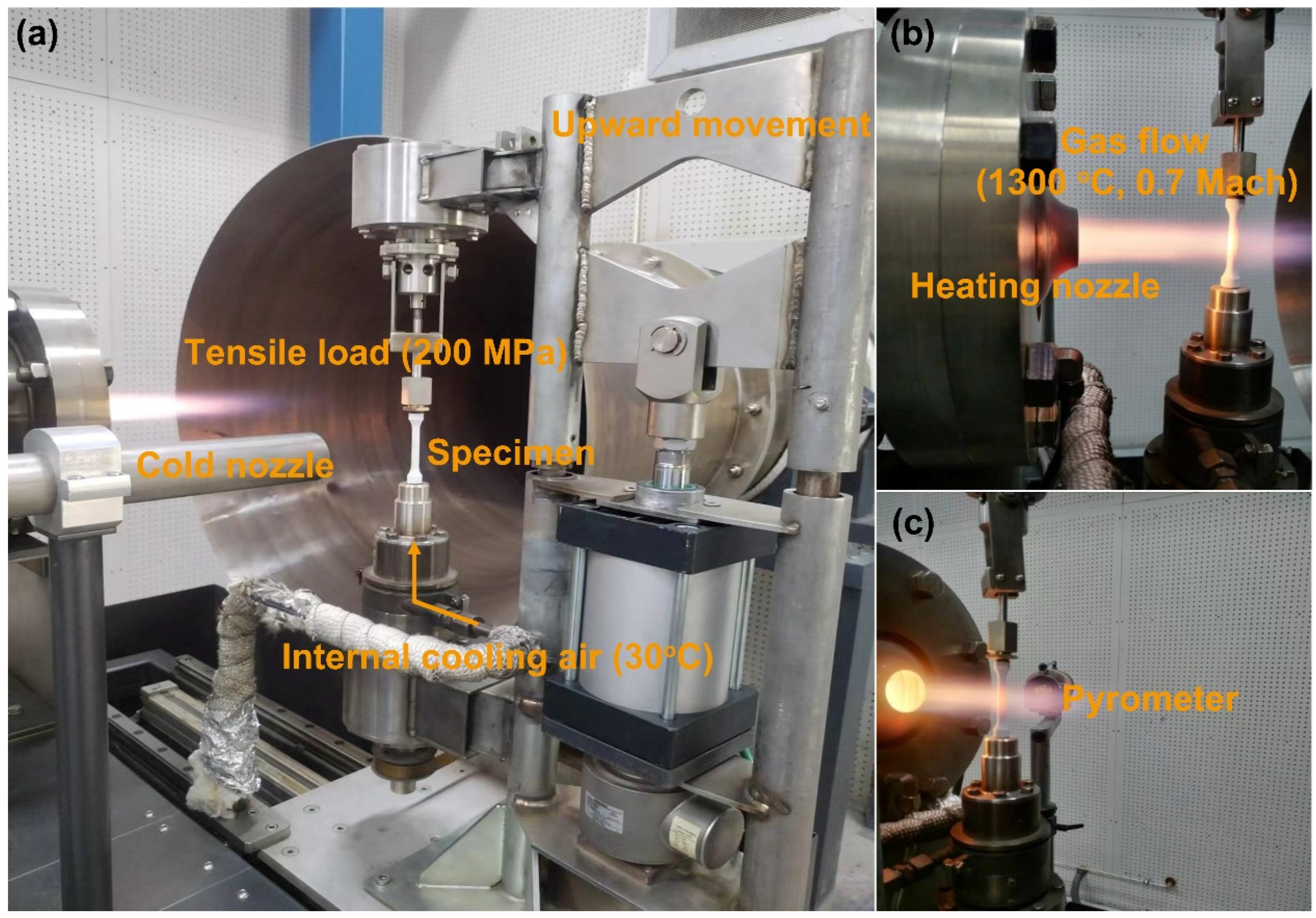

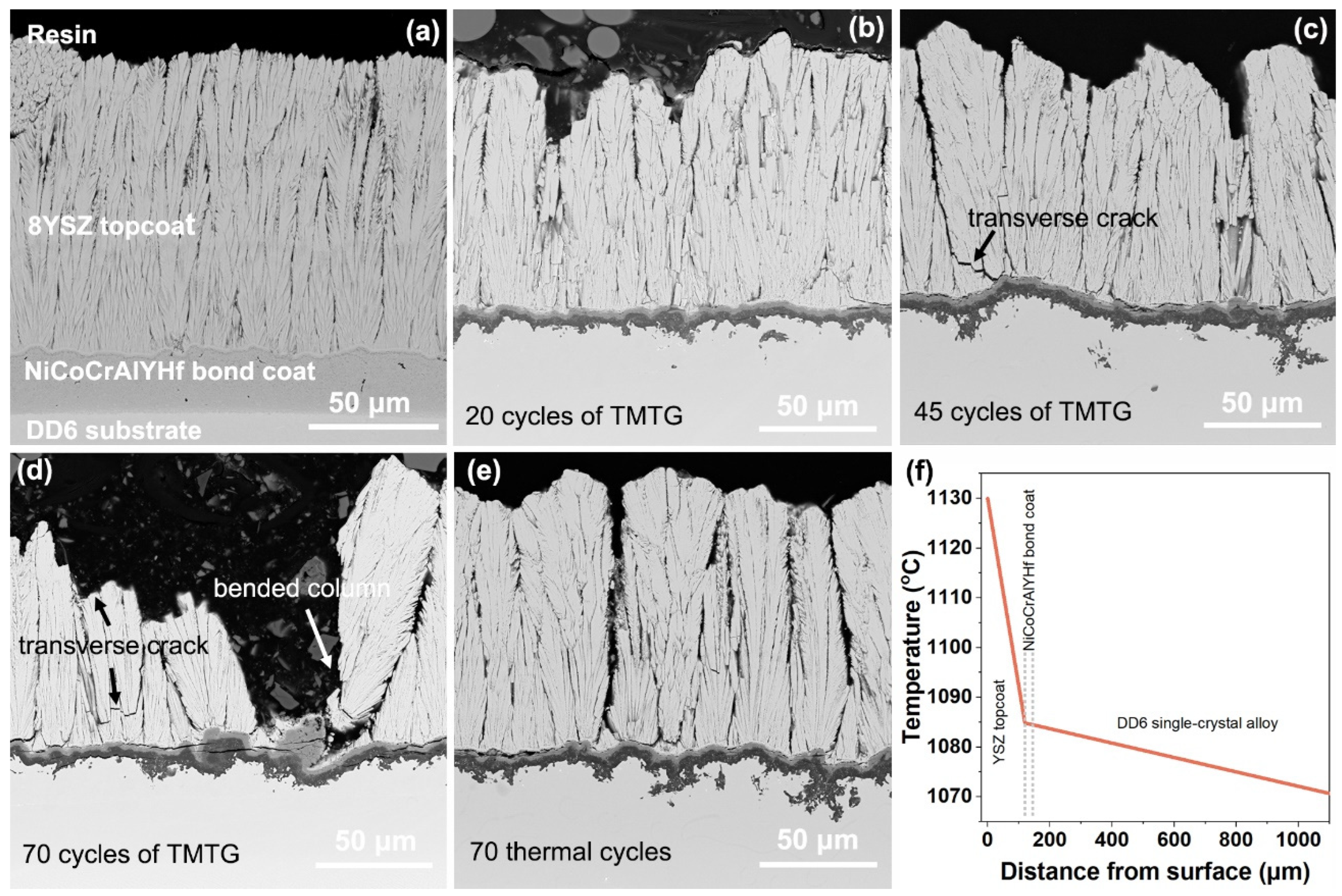
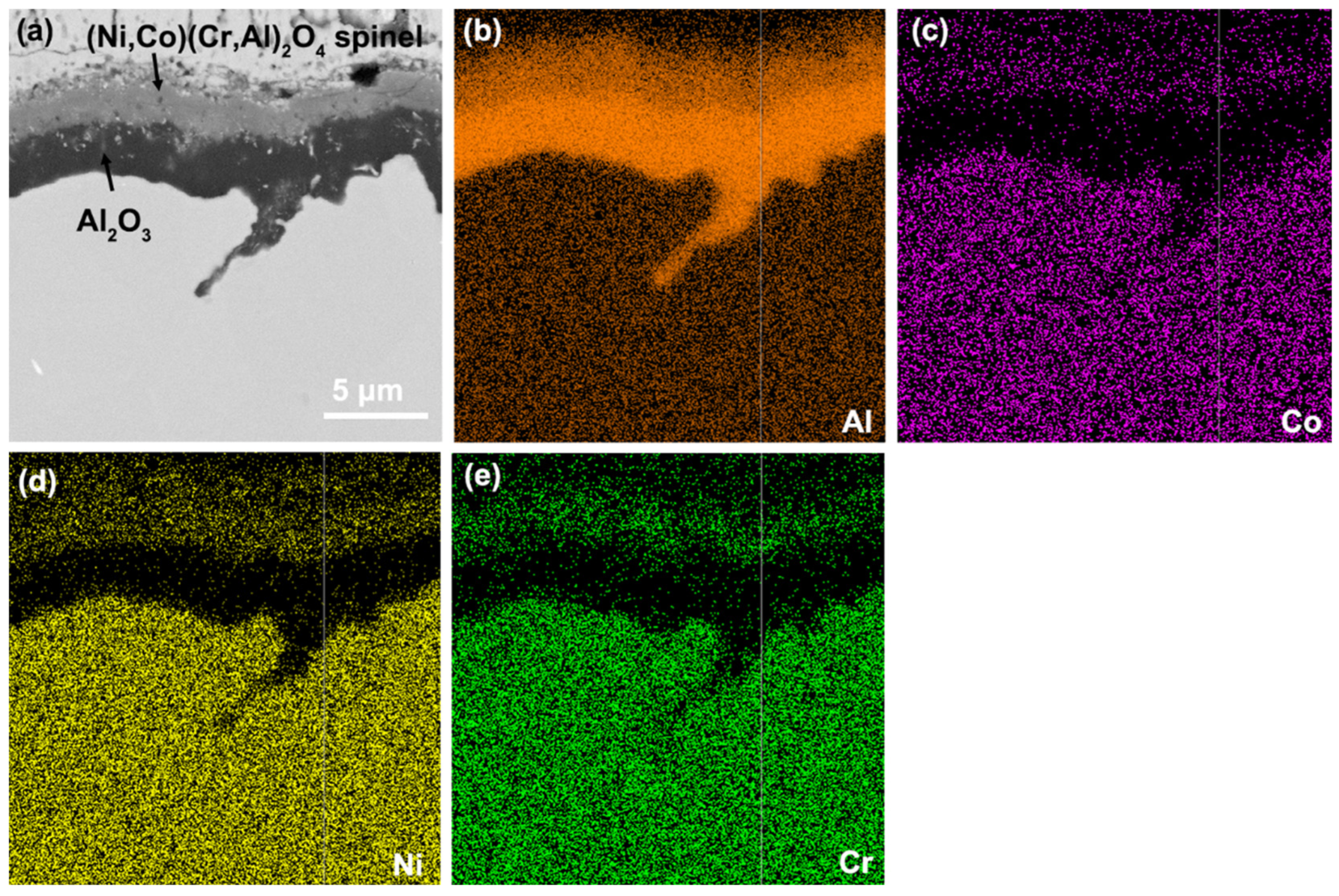
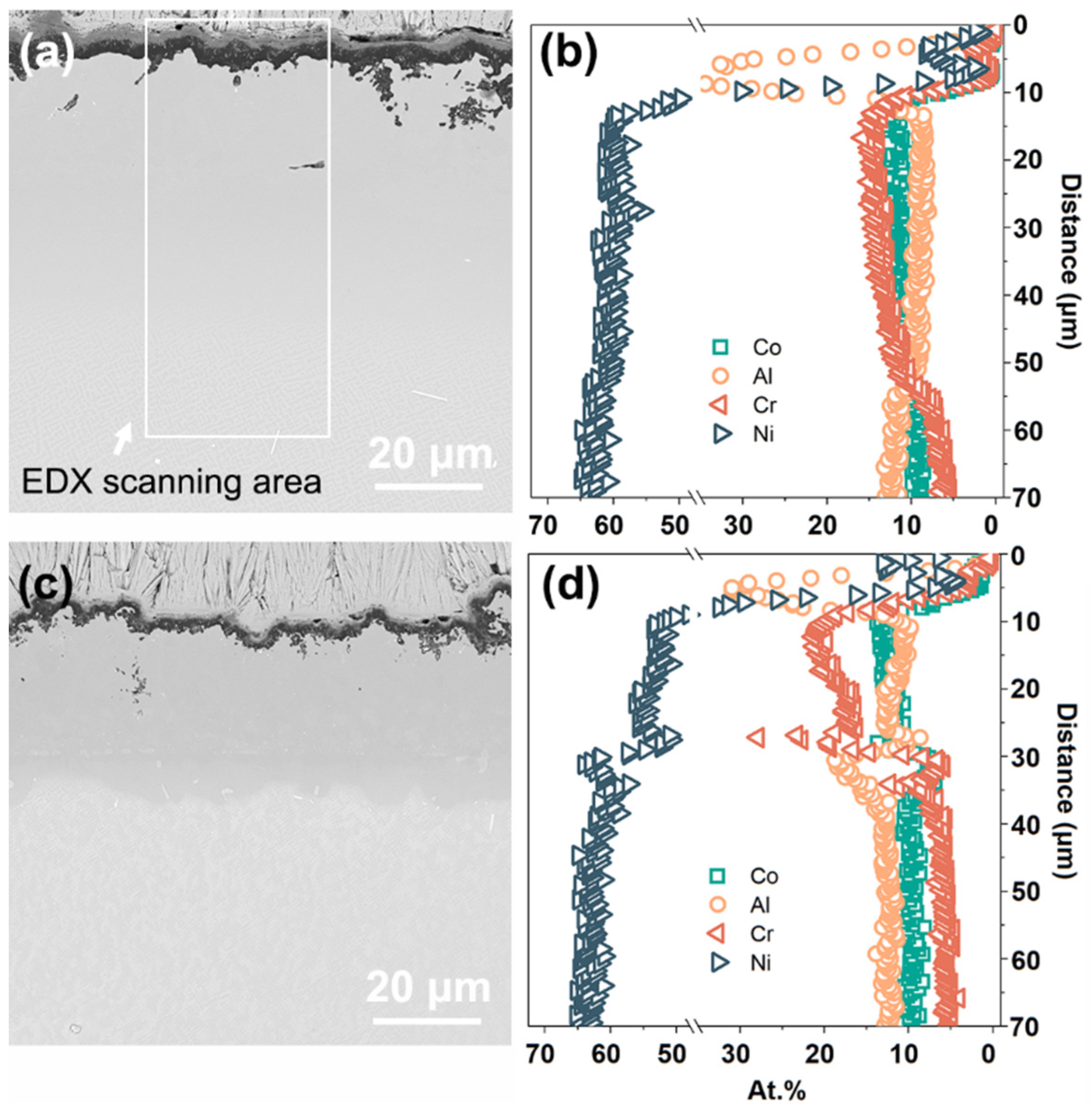

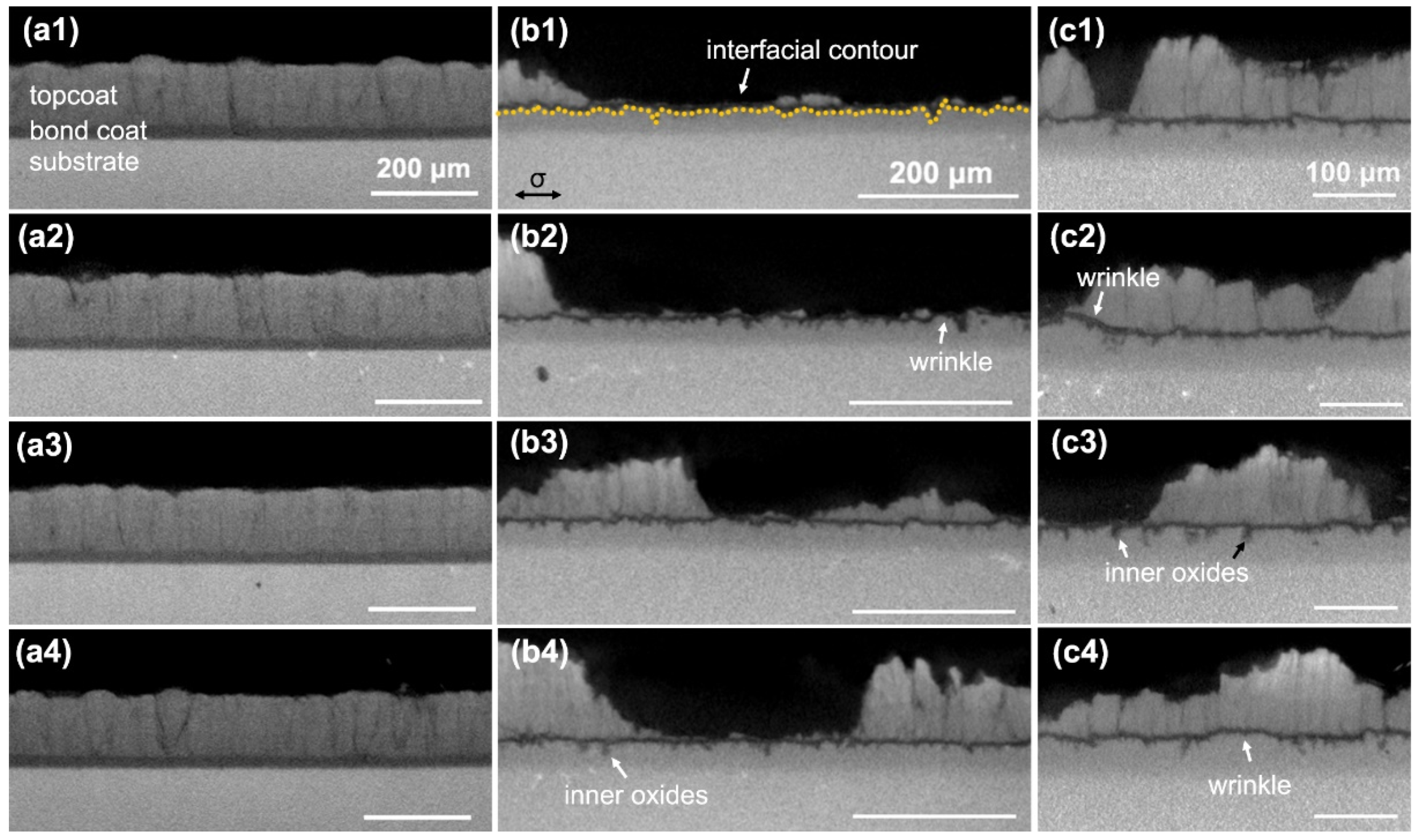
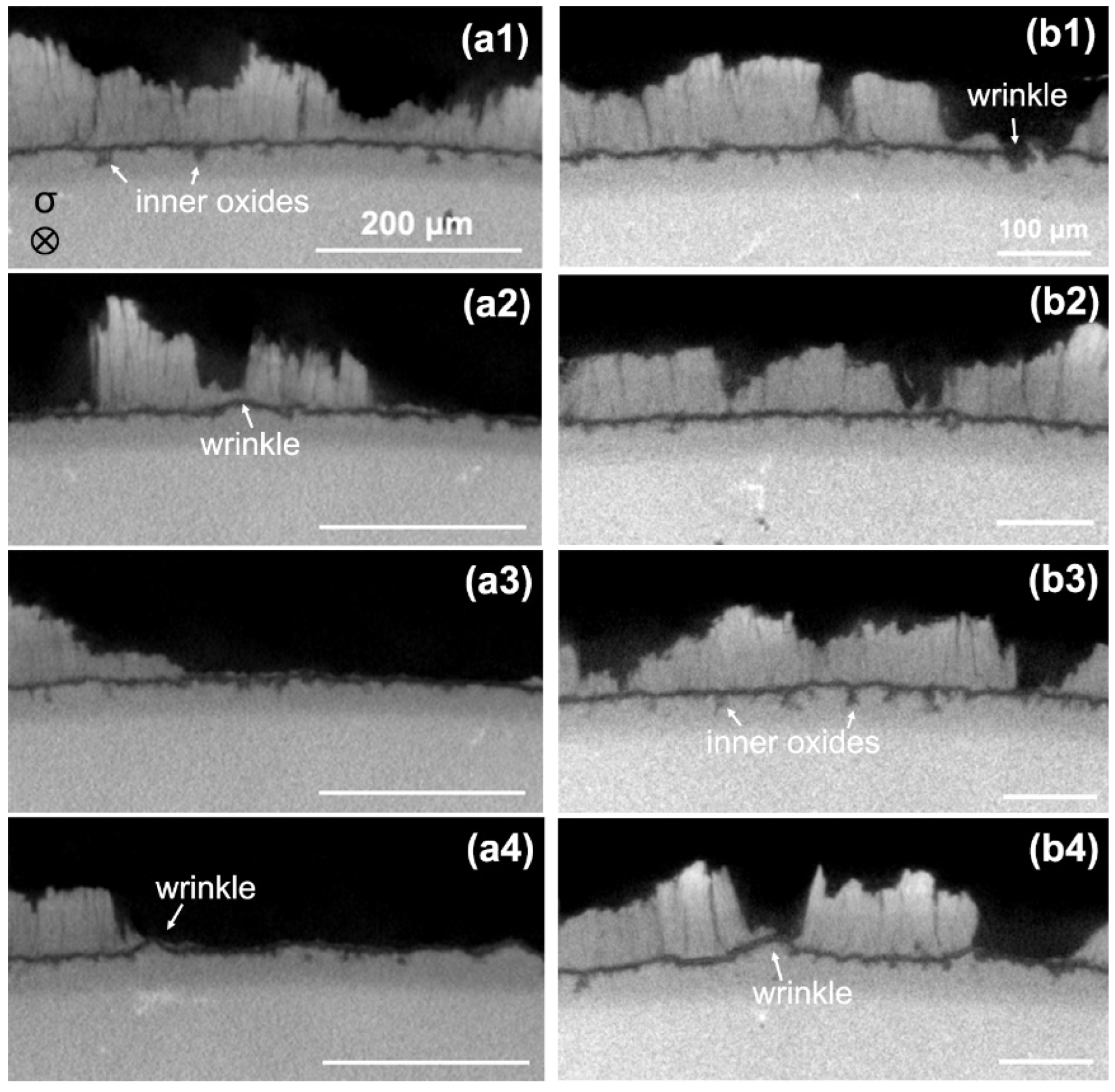
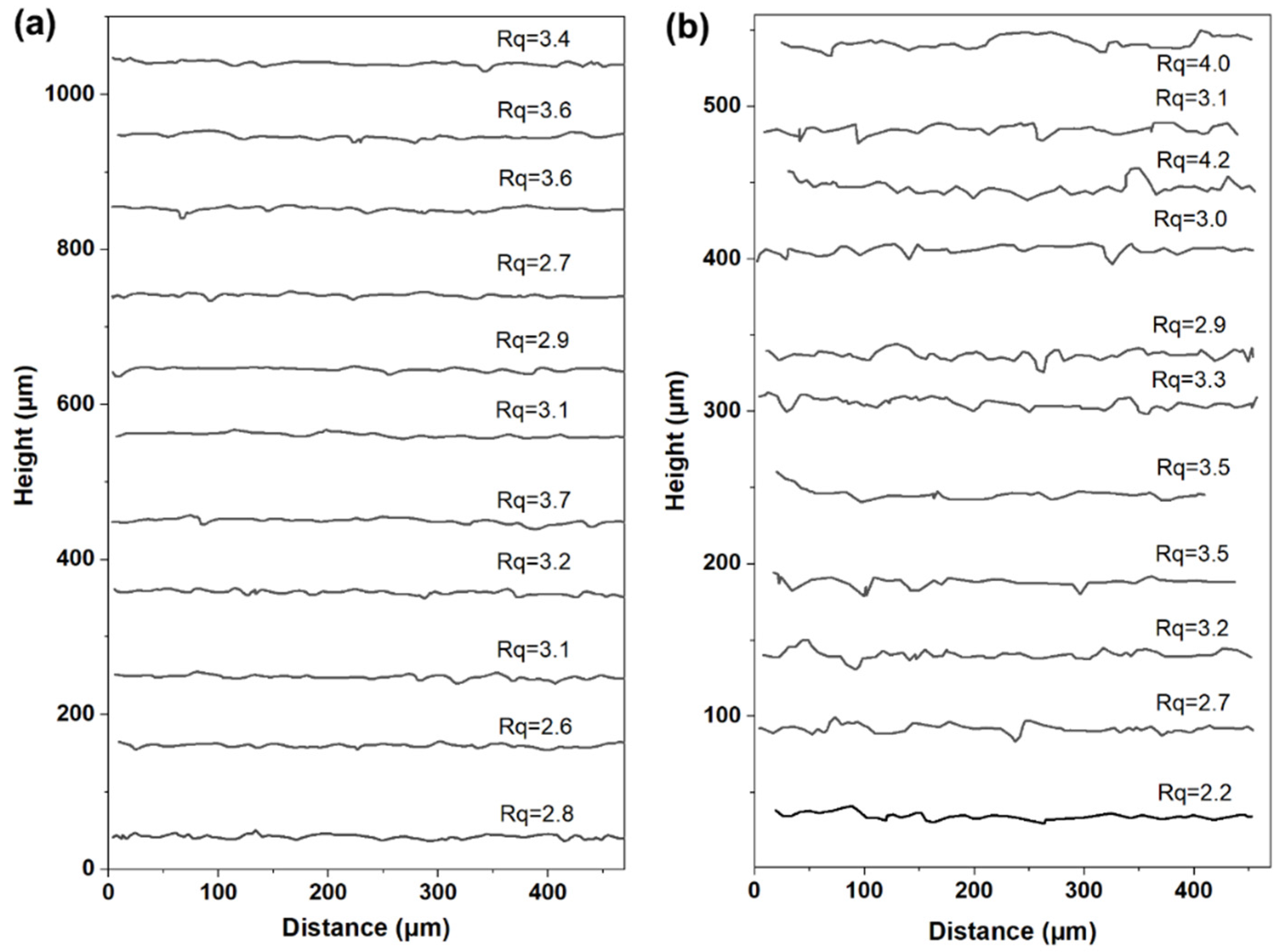
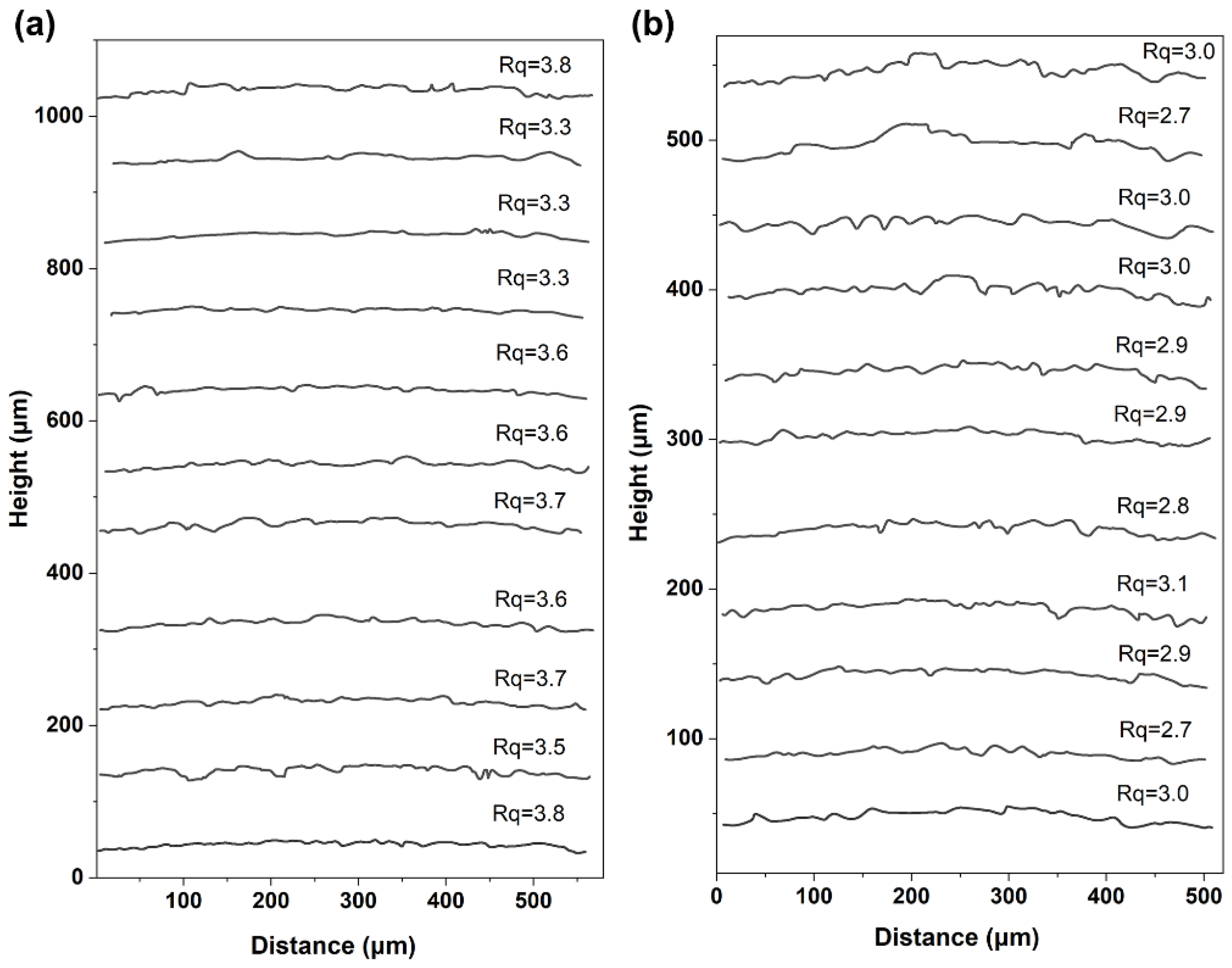
| Alloys | Cr | Co | W | Al | Ta | Y | Hf | Re | Ni |
|---|---|---|---|---|---|---|---|---|---|
| DD6 | 3.8–4.8 | 8.5–9.5 | 7.0–9.0 | 5.2–6.2 | 6.0–8.5 | / | / | 1.6–2.4 | Bal. |
| NiCoCrAlYHf | 18–23 | 10–15 | / | 8–12 | / | 0.1–0.5 | 0.2–0.6 | / | Bal. |
Disclaimer/Publisher’s Note: The statements, opinions and data contained in all publications are solely those of the individual author(s) and contributor(s) and not of MDPI and/or the editor(s). MDPI and/or the editor(s) disclaim responsibility for any injury to people or property resulting from any ideas, methods, instructions or products referred to in the content. |
© 2024 by the authors. Licensee MDPI, Basel, Switzerland. This article is an open access article distributed under the terms and conditions of the Creative Commons Attribution (CC BY) license (https://creativecommons.org/licenses/by/4.0/).
Share and Cite
Liu, L.; Liu, D.; Cai, H.; Mu, R.; Yang, W.; He, L. Failure of Electron Beam Physical Vapor Deposited Thermal Barrier Coatings System under Cyclic Thermo-Mechanical Loading with a Thermal Gradient. Coatings 2024, 14, 902. https://doi.org/10.3390/coatings14070902
Liu L, Liu D, Cai H, Mu R, Yang W, He L. Failure of Electron Beam Physical Vapor Deposited Thermal Barrier Coatings System under Cyclic Thermo-Mechanical Loading with a Thermal Gradient. Coatings. 2024; 14(7):902. https://doi.org/10.3390/coatings14070902
Chicago/Turabian StyleLiu, Liyu, Delin Liu, Huangyue Cai, Rende Mu, Wenhui Yang, and Limin He. 2024. "Failure of Electron Beam Physical Vapor Deposited Thermal Barrier Coatings System under Cyclic Thermo-Mechanical Loading with a Thermal Gradient" Coatings 14, no. 7: 902. https://doi.org/10.3390/coatings14070902




